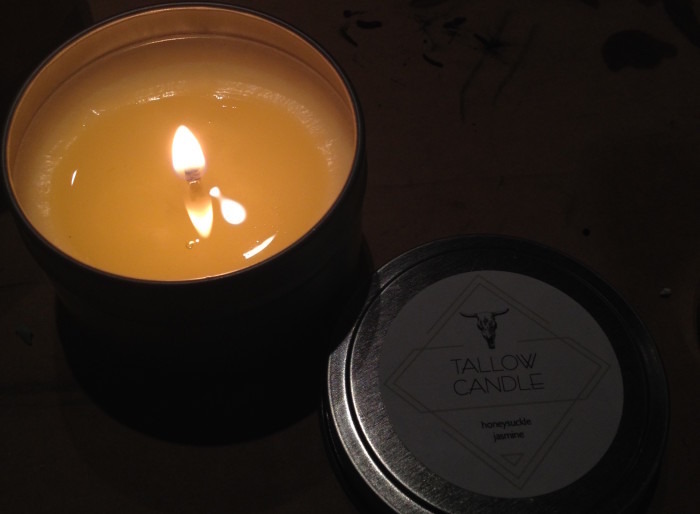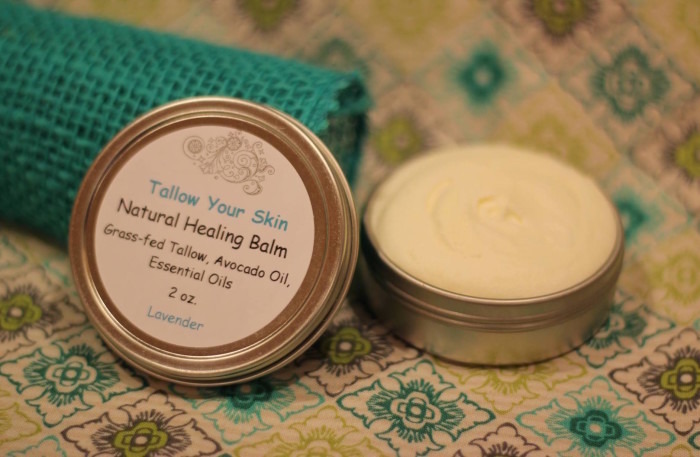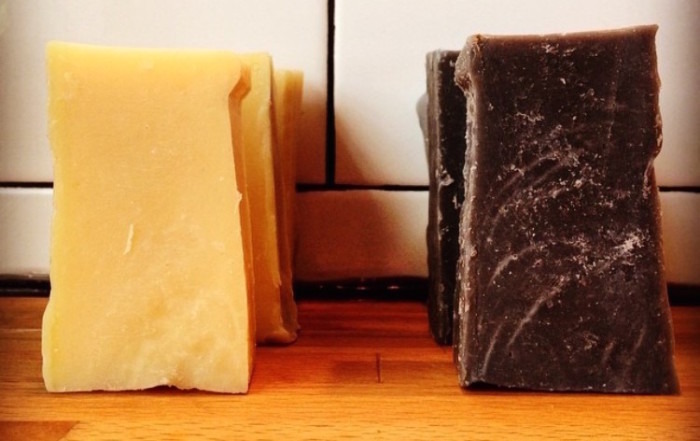How To Make Candles, Soaps And Balms With Meat Fats. And Why.
We may receive a commission on purchases made from links.
Food Republic's column Ask Your Butcher seeks to answer FAQs in the world of butchery. Ethically minded butcher Bryan Mayer founded Philadelphia's Kensington Quarters and helped develop a renowned butcher-training program at Brooklyn's Fleisher's. Today, he consults with farmers, chefs, butchers and anyone else who will listen. In each column, Mayer tackles a pressing issue facing both meat buyers and home cooks. This week, he shows us all the interesting things you can do with leftover meat fats.
We left off last time talking about some wonderful culinary uses for skin, bones and fats. Hopefully, the column enticed you to go even further and explore many more edible possibilities — especially pie crusts with fats. Just like burger season, it's always pie season, and nothing gets you that incredibly flaky pie crust like using pork lard. Sure, summer fruit pies are great, but it's the savory fall and winter ones that really do it for me. And whether it's single crust or double, lattice or not, pork lard is where it's at! But there are a few more uses for fat — of the inedible kind — that are fairly useful as well. Some might even say they are absolutely necessary.
I have somewhat of a confession to make: I'm a bit of a "prepper." I don't know if it was a gag-gift copy of The Worst-Case Scenario Survival Handbook back in 1999, my irrational fear of the coming zombie apocalypse or that I'm a "just in case" sort of guy, but I like to prepare for anything. And if you ask some of my friends, I do seem to theoretically know how to get out of situations that will probably never happen to me. I'm not at a bunker-building level yet, but I do own a go bag and a water purification system. I've also done my share of hunting and fly fishing, and as the title of this column series suggests, I am fairly good with a knife.
So imagine yourself in that bunker, living off all of that great canned and fermented food and those cured meats you've prepared, but feeling a little out of sorts. Maybe you're in need of a shower, perhaps you've got some dry skin or maybe you just want to cover up that musty bunker smell. Well, the answer, my friends, is in animal fats — soap, balm and candles, to be exact. Clearly, that scenario doesn't need to exist at all. But here's why you should still think about making your own, or about supporting your local butcher shop that's gone through the trouble of making them for you. And even if you don't plan on stocking your bunker with them, these make great gifts — with no needed mention of the coming apocalypse.

Candles
According to the National Candle Association, candles have been used as far back as 5,000 years ago as a source of light. And while little is known of the origins, we do know that Egyptians and Romans were dipping reeds and papyrus in animal fats to light their way. In Asia, candles were made from insects and tree nuts. And while beeswax was the preferred wax to use in the 13th century due to its fragrant smell, it wasn't until the 19th century that animal fats (or rather a component, stearic acid) fell back into favor, assisted by the use of petroleum-based paraffin. Of course, the invention of the light bulb ended this impressive run.
Fortunately, making tallow candles is a fairly easy endeavor. For our purposes, the most readily available tallow would be from beef suet, but feel free to use sheep, goat, deer, et cetera. Its fat composition makes it more ideal for these applications than lard, which is derived from pork. More on this when we talk about balms.
The process of making candles is extremely easy. Feel free to play with the recipe, adding any essential oils that you may like. A great place to get these oils (among other organic herbs and spices in bulk) is Mountain Rose Herbs.
Ingredients
Canning jars (something like Ball, which are heat resistant)
Tallow (that's rendered beef or mutton fat, preferably from your local whole-animal butcher shop)
Wicks (like these)
Directions:
My apologies for the lack of specifics here, but you really don't need them. Simply take a double boiler or easily create one and liquefy your tallow. Once it's completely melted, allow it to cool for a bit and get your jars ready. The most difficult part of this process is keeping the wick centered in the jar. You can accomplish this a few ways, but I find that either a piece of double-stick tape or resting the wick between two pencils, pens, sticks — whatever you've got, you get the point — does the trick. Once the tallow has cooled enough (you'll know when it starts to turn white), you can trim the wick. That's it — it's that simple. If you or your butcher has rendered the fat properly, you don't have to worry about rancidity. These candles will last.

Balms/Salves
You should be rubbing beef fat on your face! And not because it's essentially what your own skin is made of, but because of what it's not made of: phthalates, triclosan, toluene, formaldehyde and other chemicals are included in many skin products, not to mention a lot of cheap, watered-down herbal and plant-based extracts. Now, I'm sure these amounts are at levels that are deemed safe for use (at least that's what the FDA says), but why take a chance, especially when something so abundant and readily available is a much better option?
Besides, a lot of skin products already have tallow in them, but companies like to keep that quiet. And while some may argue that their ingredients are the same as the ones naturally occurring in tallow, they are a far cry from what nature intended, due to fractioning and chemical compounding. Add to all of this the fact that if you're using tallow from grass-fed cattle (which I know you are), you're potentially getting more minerals and micronutrients, more vitamin E and more conjugated linoleic acids (CLAs) than their grain-fed/finished counterparts.
Not convinced yet? How about this: Tallow is extremely compatible with our skin biology, more so than what's available commercially out there. Have you ever wondered why there are so many products targeted at so many parts of the body? With the exception of thickness, amount of gland and hair follicles, it's all pretty much the same thing — skin.
Tallow just works better. It's made up of saturated, monosaturated and polysaturated fats. Yes, the same as our skin, along with a host of other biologically compatible stuff. Sure, keep using that coconut oil — it works great. But tallow has an abundance of fat-soluble vitamins (A, D, E and K), plus it's an anti-inflammatory (thanks to the CLAs) and an anti-microbial.
Ready to make some yourself? Like the candles above, it's a relatively easy process that uses minimal ingredients. You can keep it simple using just tallow and either olive or coconut oil (or a blend), or you can add essential oils for an additional scent. You can render the fat yourself, making sure to go slow and filter it extremely well, or you can buy it, already rendered, from your local butcher shop. Again, heat it slowly over a double boiler. What you add will change the consistency ("spreadability") of your balm. A good rule of thumb is roughly eight parts tallow to one part olive oil, by weight. You can use coconut oil or palm oil, but you'll need more, as those oils are thicker. And please make sure you're using the good stuff. Coconut oil and palm oil are sometimes extracted using hexane. Not good! If you wish, add some essential oils, but again, make sure they are not adulterated, extended, synthesized or distilled using chemicals or high temperatures and pressure. A properly made balm should last from six months to a year.

Soaps
Let's say you use every part of the animal — all the offal and all the bones, making handbags from the hides — and yet at the end of the day, you're still reaching for Ivory soap. Stop it! For the same reasons mentioned above for balms and salves, you should be using better soap, and, if you're so inclined, you should make a batch yourself. I've saved the most time-consuming and potentially hazardous item for last. But if you have the time (roughly three weeks) and are careful while you work with lye (a dangerous corrosive chemical), you'll wash up cleaner and healthier than Brad Pitt's character in Fight Club.
You'll once again want to render and strain your tallow or reheat your already rendered lard slowly. You can use a mix of tallow and lard or just use tallow, olive or a similar oil, and add essential oils as desired. I like the ease of the recipe by Mother Earth News. The site offers an easy-to-follow, volume-based recipe for the beginner. You'll eventually want to convert to weight-based so you can sub in different ingredients as you experiment with various essential oils. Obviously, proper precautions should be taken while working with lye, so make sure you're covered up and protected. What you're left with at the end of the process is a pure cleanser that is much different than its saponified siblings.
If this process has you a bit intimidated, many butcher shops make their own. I'm partial to the charcoal soap my friends at Hudson & Charles make in New York City's West Village. So give your local shop a call and see what they've got going on outside of the meat case.

